Abstract
Normal mice were immunized with picryl chloride. 51Cr-labelled normal lymph node cells were injected 1–10 days afterwards and the net arrival of radioactivity at the draining lymph nodes estimated. The net arrival at normal unimmunized lymph nodes was 5.3 per cent of the injected dose. This rose to 13.4 per cent 1 day after immunization and then gradually declined.
This increased arrival caused by picryl chloride was reduced in mice rendered unresponsive by the repeated injection of picryl sulphonic acid or given a single injection of picryl sulphonic acid 1–6 days before immunization. Blast cells labelled with 125IUDR from lymph nodes immunized with an unrelated agent also showed an increased arrival at draining lymph nodes. This increased arrival was reduced in unresponsive mice painted with picryl chloride.
A single intravenous injection of picryl sulphonic acid increased the arrival of normal lymph node cells at lymph nodes 1 day later and this effect was also diminished in mice rendered unresponsive by repeated injections of picryl sulphonic acid.
The arrival of normal lymph node cells at the spleen was reduced by painting with picryl chloride or by a single injection of picryl sulphonic acid given a few days beforehand.
Painting the ears of unimmunized mice with picryl chloride increased the arrival of normal lymph node cells and blast cells at the ears. However, the arrival was unaffected by pretreatment with picryl sulphonic acid.
It was concluded that the increased arrival of cells in lymph nodes caused by picryl chloride and picryl sulphonic acid had both an immunological and a chemical inflammatory component. In contrast the arrival at painted ears lacked an immunological component. This provided evidence for antibody, or antigen-sensitive cells in apparently unimmunized mice which rapidly release pharmacologically active agents on exposure to antigen.
Full text
PDF
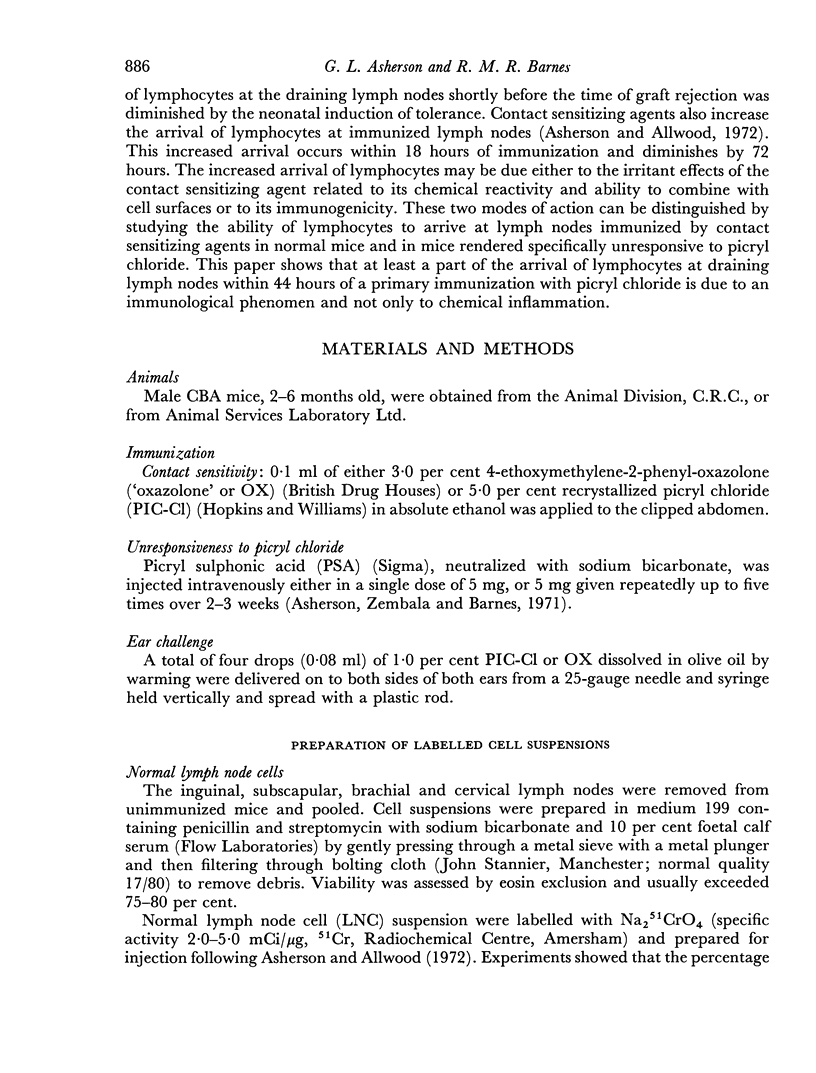
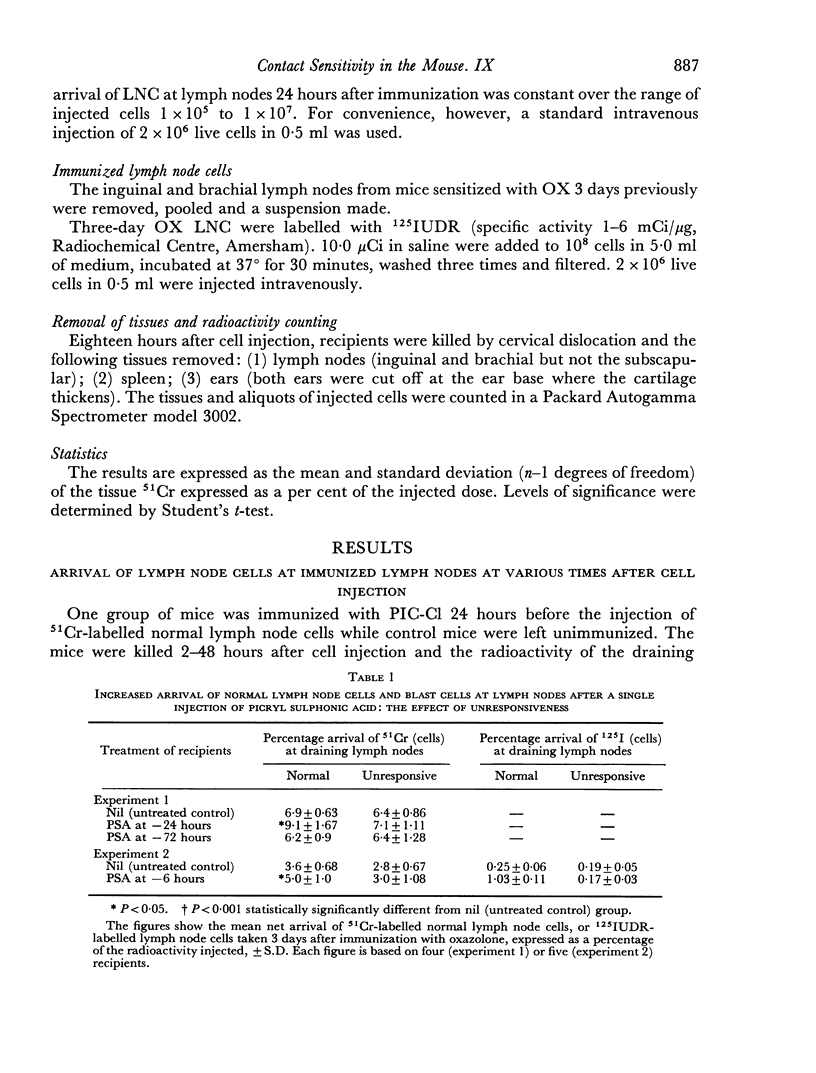
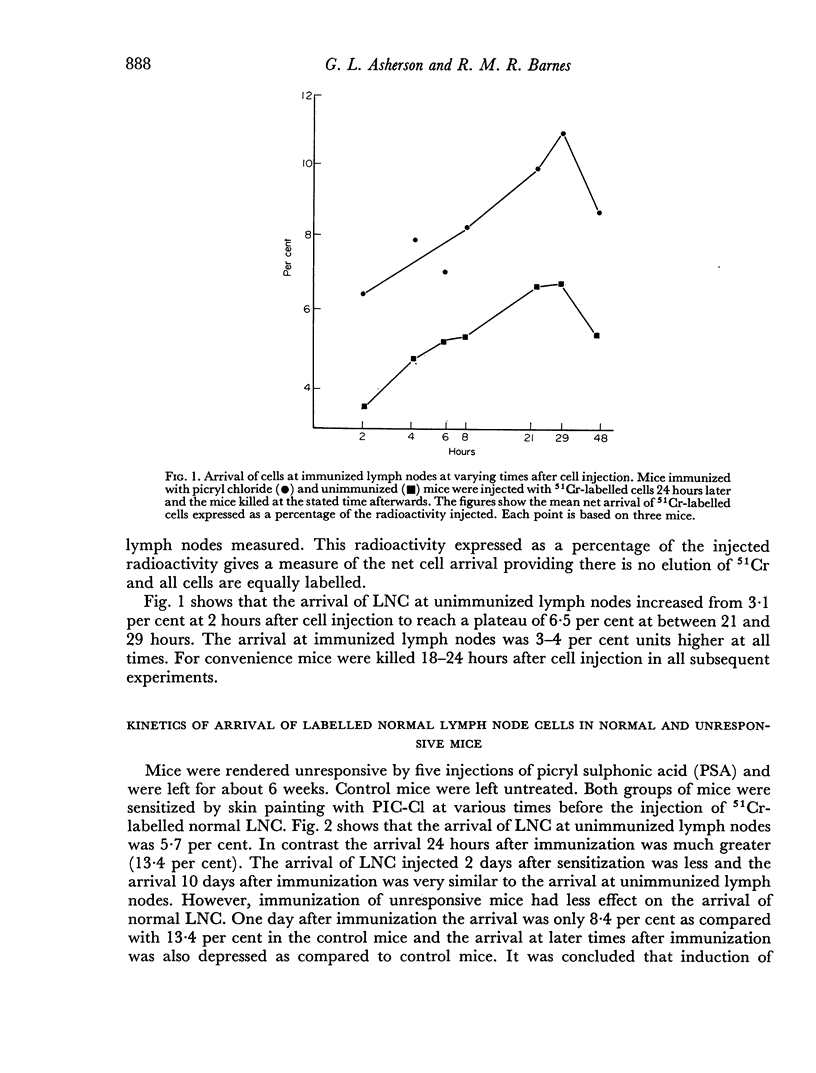
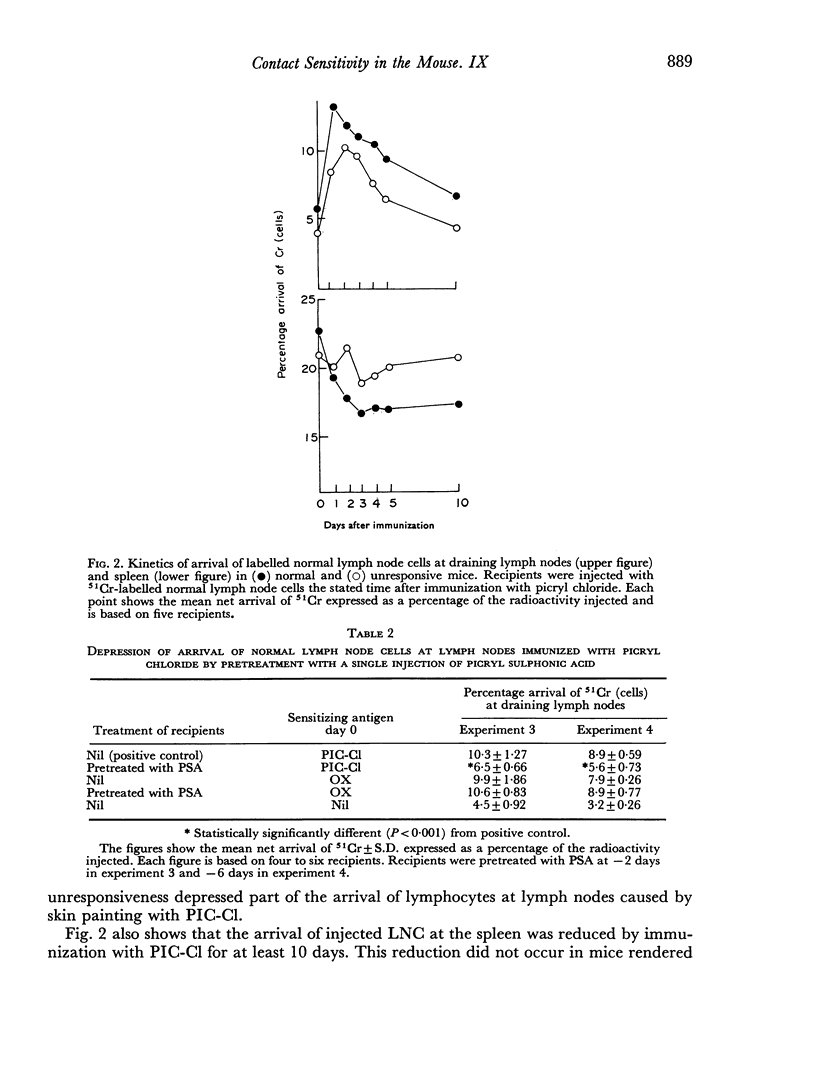
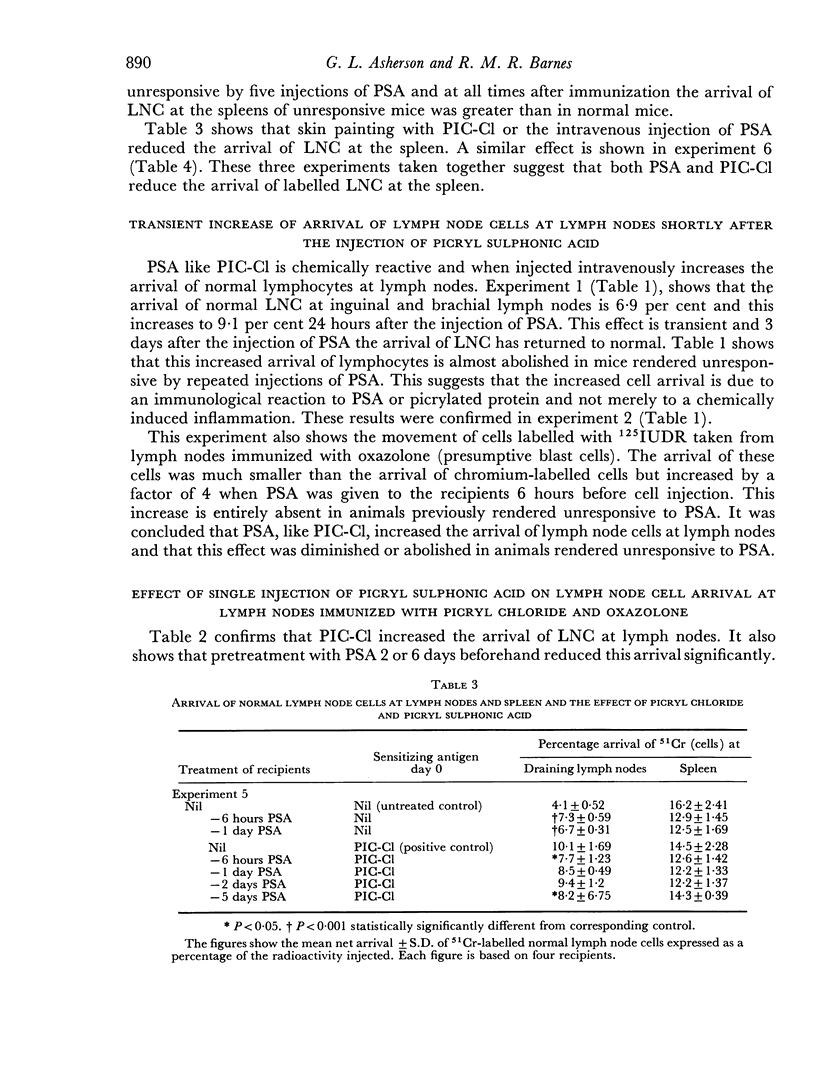

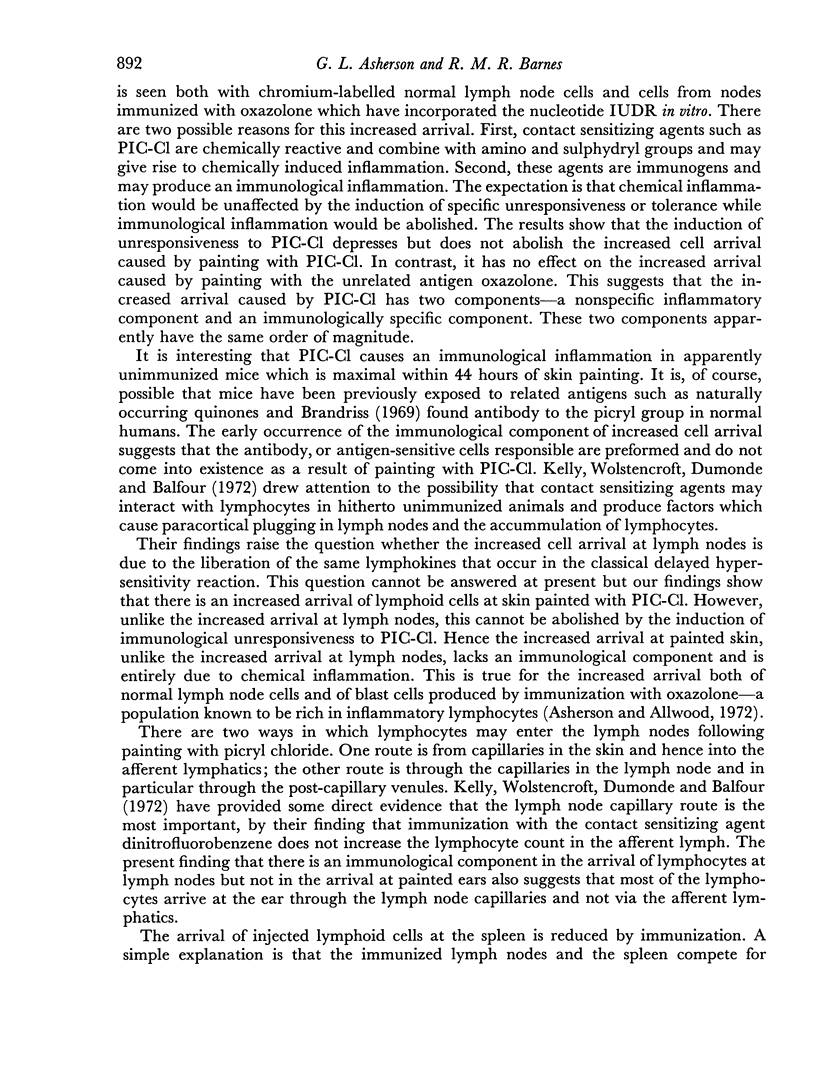
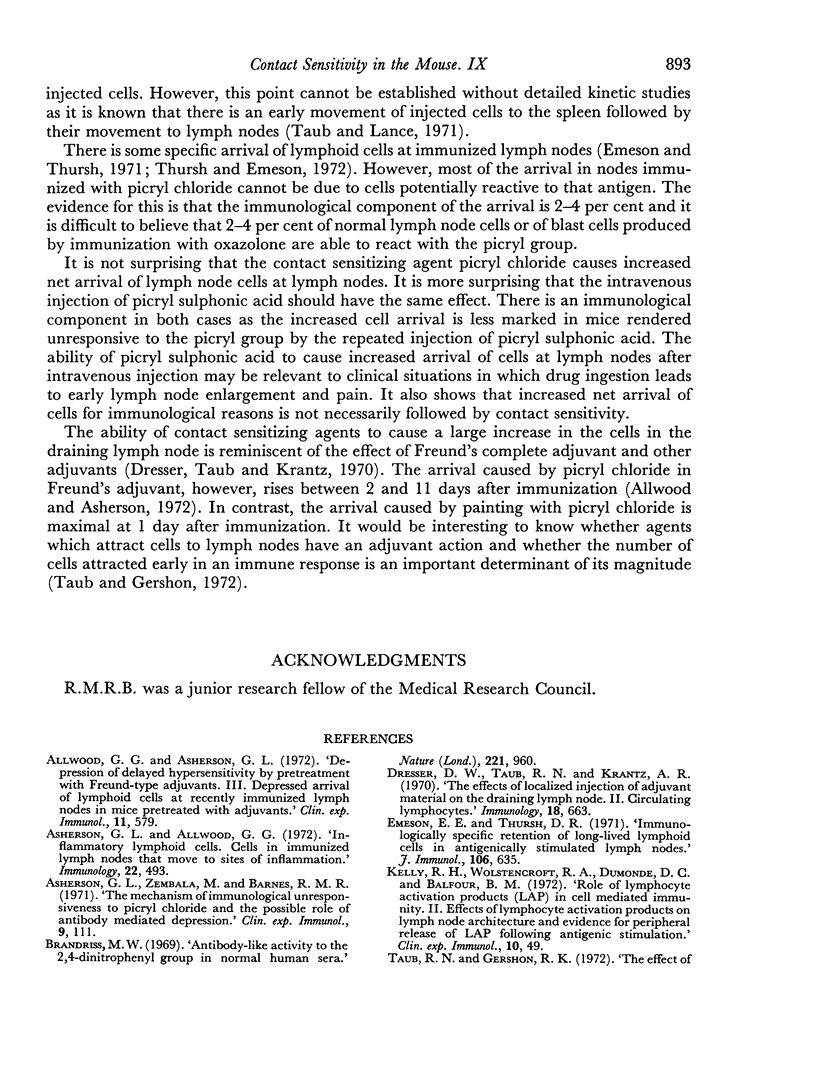
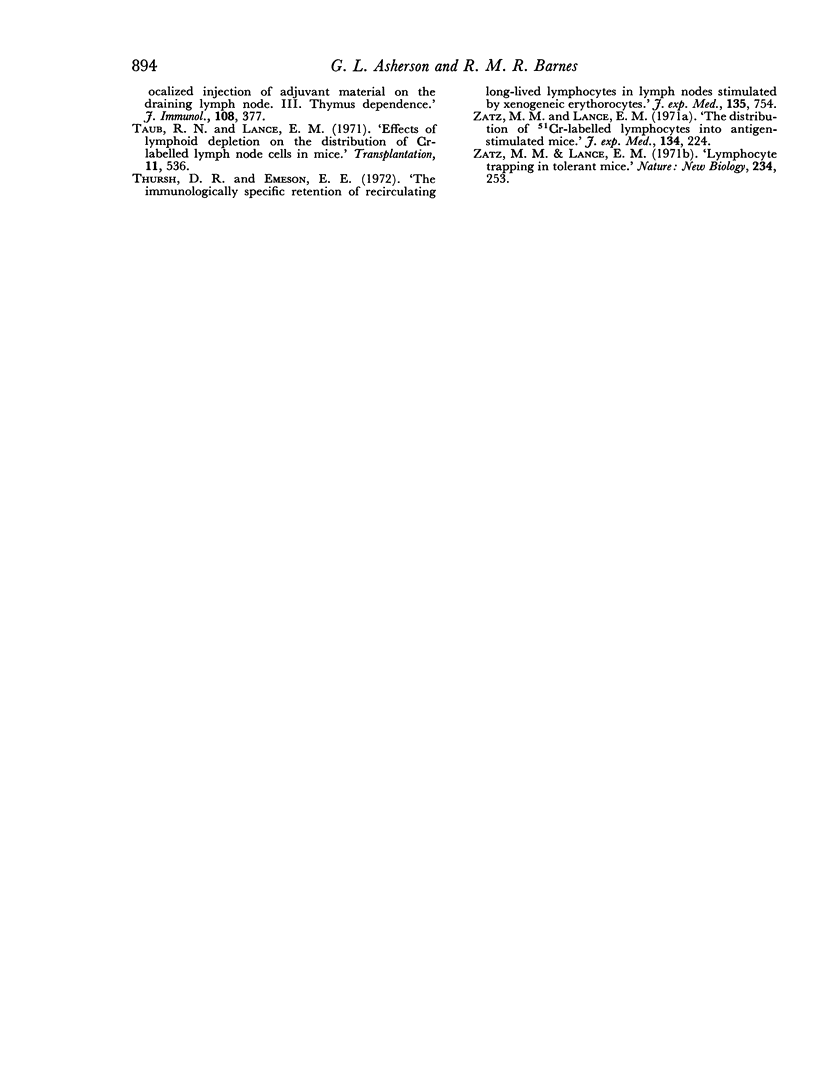
Selected References
These references are in PubMed. This may not be the complete list of references from this article.
- Allwood G. G., Asherson G. L. Depression of delayed hypersensitivity by pretreatment with Freund-type adjuvants. 3. Depressed arrival of lymphoid cells at recently immunized lymph nodes in mice pretreated with adjuvants. Clin Exp Immunol. 1972 Aug;11(4):579–584. [PMC free article] [PubMed] [Google Scholar]
- Asherson G. L., Allwood G. G. Inflammatory lymphoid cells. Cells in immunized lymph nodes that move to sites of inflammation. Immunology. 1972 Mar;22(3):493–502. [PMC free article] [PubMed] [Google Scholar]
- Brandriss M. W. Antibody-like activity to the 2,4-dinitrophenyl group in normal human sera. Nature. 1969 Mar 8;221(5184):960–962. doi: 10.1038/221960a0. [DOI] [PubMed] [Google Scholar]
- Dresser D. W., Taub R. N., Krantz A. R. The effect of localized injection of adjuvant material on the draining lymph node. II. Circulating lymphocytes. Immunology. 1970 May;18(5):663–670. [PMC free article] [PubMed] [Google Scholar]
- Emeson E. E., Thursh D. R. Immunologically specific retention of long-lived lymphoid cells in antigenically stimulated lymph nodes. J Immunol. 1971 Mar;106(3):635–643. [PubMed] [Google Scholar]
- Kelly R. H., Wolstencroft R. A., Dumonde D. C., Balfour B. M. Role of lymphocyte activation products (LAP) in cell-mediated immunity. II. Effects of lymphocyte activation products on lymph node architecture and evidence for peripheral release of LAP following antigenic stimulation. Clin Exp Immunol. 1972 Jan;10(1):49–65. [PMC free article] [PubMed] [Google Scholar]
- Taub R. N., Gershon R. K. The effect of localized injection of adjuvant material on the draining lymph node. 3. Thymus dependence. J Immunol. 1972 Feb;108(2):377–386. [PubMed] [Google Scholar]
- Taub R. N., Lance E. M. Effects of lymphoid depletion on the distribution of 51Cr-labeled lymph node cells in mice. Transplantation. 1971 Jun;11(6):536–542. [PubMed] [Google Scholar]
- Thursh D. R., Emeson E. E. The immunologically specific retention of recirculating long-lived lymphocytes in lymph nodes stimulated by xenogeneic erythrocytes. J Exp Med. 1972 Apr 1;135(4):754–763. doi: 10.1084/jem.135.4.754. [DOI] [PMC free article] [PubMed] [Google Scholar]
- Zatz M. M., Lance E. M. Lymphocyte trapping in tolerant mice. Nat New Biol. 1971 Dec 22;234(51):253–254. doi: 10.1038/newbio234253a0. [DOI] [PubMed] [Google Scholar]
- Zatz M. M., Lance E. M. The distribution of 51Cr-labeled lymphocytes into antigen-stimulated mice. Lymphocyte trapping. J Exp Med. 1971 Jul 1;134(1):224–241. doi: 10.1084/jem.134.1.224. [DOI] [PMC free article] [PubMed] [Google Scholar]


